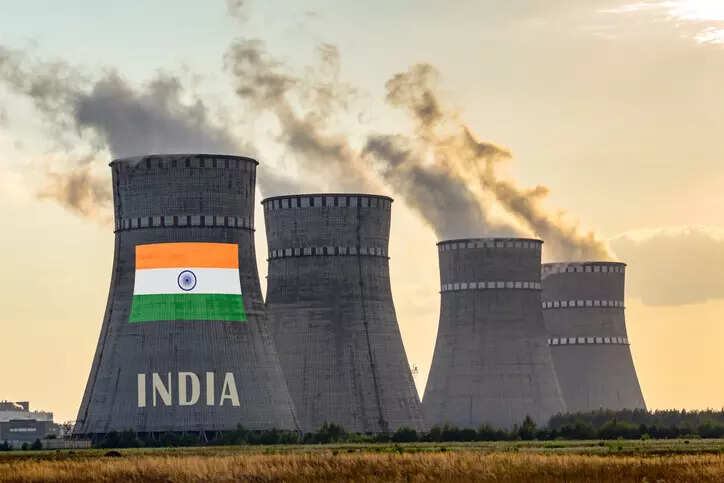[ad_1]

The central theme of Tennessee Williams’s famous play `A Streetcar Named Desire’ was about the consequences that arise when desires are left unchecked. It is hoped that we are mindful of the likely consequences of contemplating nuclear energy as a prominent vehicle for our decarbonization journey. A few days ago, a report titled “Synchronizing energy transitions towards possible Net-Zero for India: Affordable and clean energy for All” – prepared by IIM Ahmedabad and commissioned by the Office of the Principal Scientific Adviser to the Government of India with part-funding from Nuclear Power Corporation of India Ltd (NPCIL) was launched [1]. Analysing various scenarios, the report makes a strong case for nuclear power considering inherent variability of solar and wind energy; concluding “One of the key findings of this study is that clean, affordable electricity can be achieved in NZ pathways, especially with a focus on nuclear power…. No NZ is possible without substantial nuclear power generation in 2070.” [2]. The report makes an important, and interesting, observation about the levelized cost of electricity: “Since the commonly used metric levelized cost of electricity (LCOE) generation has no parameter to account for the intermittency of renewable sources, it tends to overestimate the economic efficiency of renewable energy and the extent of overestimation increases with an increase in their penetration. Therefore, metrics such as value-adjusted LCOE (VALCOE) have been proposed. For one case (stated policy scenarios for India in 2050), the results of VALCOE have been reported as follows. For nuclear, LCOE and VALCOE remain the same at 65 USD/MWh, but for solar, LCOE is 15, while VALCOE is 55 USD/MWh. With the increasing penetration of variable renewables, there is a growing realization that while renewable sources are needed for decarbonization, firm dispatchable sources such as nuclear and fossil with carbon capture and storage (or use) have to be a significant part of the energy mix. Electricity has to be generated and provided to consumers wherever they are located and whenever they need it. This results in high integration costs for renewables because of their variability and non-dispatchability. The current practice of socializing the integration cost of renewables is a hidden subsidy.” One could argue that for the sake of completeness it is not enough to merely include technical costs but to also include the cost of intangibles or externalities, for instance, monetary value of risks associated with nuclear energy; which are bound to increase with greater proliferation of nuclear reactors and concomitant nuclear waste disposal and storage. For the context, the present installed nuclear power capacity in the country of 7.48 GW is projected to increase to 22.48 GW by 2031. Chairman, Atomic Energy Commission indicates plans to increase it further to 100 GW by 2047. In the same vein, Union Minister of State (Independent Charge) Science & Technology, Dr Jitendra Singh too had said that “India is taking steps for development of Small Modular Reactors (SMR), with up to 300 MW capacity to fulfill its commitment to Clean Energy transition.” [3]The IIMA report terms “the nuclear technologies belonging to generation III+ and generation IV being developed today are considered safer as they reduce the probability of severe accidents and also limit the offsite consequences of the accidents”: safer but not absolutely safe. Irrespective of very remote statistical probability, are we ready for even one nuclear catastrophe? The fact that both, the government as well as technology suppliers,
are cognizant of this is amply demonstrated by unending delays that our civil nuclear collaboration with the US and France is facing in reaching a logical conclusion. According to an article ` Completing the U.S.-India Civil Nuclear Agreement: Fulfilling the Promises of a Summer Long Past’ by Carnegie Endowment for International Peace, even after almost two decades there is no tangible outcome of the agreement because of rigid position on whose liability it is going to be in the event of any mishap [4]. Similarly, Jaitapur nuclear power facility has yet to see any French reactor even after 15 years of negotiations, with the financing issues, liability questions and safety concerns being the stumbling block [5]. What does it convey about a supposedly safe technology?Let us now turn to Small Modular Reactors or SMRs with capacities ranging from 10 to 300 MW, that are considered as a panacea for the energy transition and naturally for all the possible nuclear ills. While present-day SMRs are projected to be economically viable and totally safe, given that there are only a couple of operating SMRs in Russia and China, there is not enough operational data to establish their bonafide conclusively. On the other hand, there are enough studies to show that SMR too come with the usual problems: the risk of severe accidents and the production of radioactive waste. As the renowned expert Prof. MV Ramana of University of British Columbia comments in `Slow deployment, safety hazards make SMRs a poor climate solution’ “All else being equal, making reactors smaller reduces the risk and impact of accidents. Smaller reactors have a lower inventory of radioactive material and less energy available for release during an accident. But even a very small reactor (say, one that generates under 10 megawatts of electricity) can undergo accidents that result in significant radiation doses to members of the public. The physical process
underlying the operation of an SMR, i.e., nuclear fission, will always result in radioactive substances being produced. Thus, radioactive waste generation is inextricably linked to the production of nuclear energy, no matter what kind of reactor is used. [6]A related aspects pertains to a wide number of SMRs required to produce the same output as a few, conventional nuclear reactors, potentially creating more widespread safety concerns. As per a report prepared by the Öko-Institut, together with the Technical University of Berlin and the Physikerbüro Bremen for the Federal Office for the Safety of Nuclear Waste Management (BASE), Germany “To produce the same worldwide electrical output that is generated by new nuclear power plants today, the number of facilities would need to be increased by a factor of 3-1000. Instead of today’s approximately 400 high-power reactors, this would mean the construction of many thousands to tens of thousands
of SMR units. SMRs could potentially have safety advantages over large-capacity nuclear power plants, as they have a lower radioactive inventory per reactor, for example. However, the high number of reactors required to produce the same amount of electricity would increase the risk many times over.” BASE website states in Q&A: “Many SMR concepts also aim to minimise safety requirements, for example with regard to the diversity of safety systems. Some SMR concepts even call for the abandonment of current requirements, for example in the area of plant-internal emergency protection. Others completely forego external emergency response planning. These safety concepts, which are also pursued for the sake of cost efficiency, will also increase the risks.” [7]. One has to only throw in India’s vulnerability to intensified extreme weather events like flooding and cyclones to come up with a perfect recipe for disaster.
For a complex puzzle that decarbonization of economy is, exploring all feasible demand and supply side options is given albeit including assessment of potential long-term risks and a transparent stakeholders consultative process. Certainly not by simply comparing different options on prices of delivered electricity or the relative dispatchability. The fact that nuclear energy has always remained shrouded in some sort of opaqueness in our country, does little to inspire confidence. The short point is to look at such emerging options not merely through a `clean energy’ lens but examine all the potential fallouts. Ultimately, well-being of people is central to climate action. `Just transition’ is not only about the goals but, more importantly, about the means to meet those aspirations. Moreover, instead of doubling down on technological solutions that are already there and proven, like renewables; banking on yet-to-be-proven-at-a-scale technologies gives laissez-faire to the continued use of fossil fuels.
[This piece was written by Amit Kumar, Senior Fellow, WRI India and Former Senior Director, Social Transformation, TERI. Views expressed are personal]
References:
1. https://bit.ly/3TSFLp0
2. https://bit.ly/3vNMRTA
3. https://bit.ly/43UhlQz
4. https://bit.ly/3xyvrLr
5. https://bit.ly/441H1L5
6. https://bit.ly/3UbKSC0
7. https://bit.ly/4aO6jyx
[ad_2]
Source link



